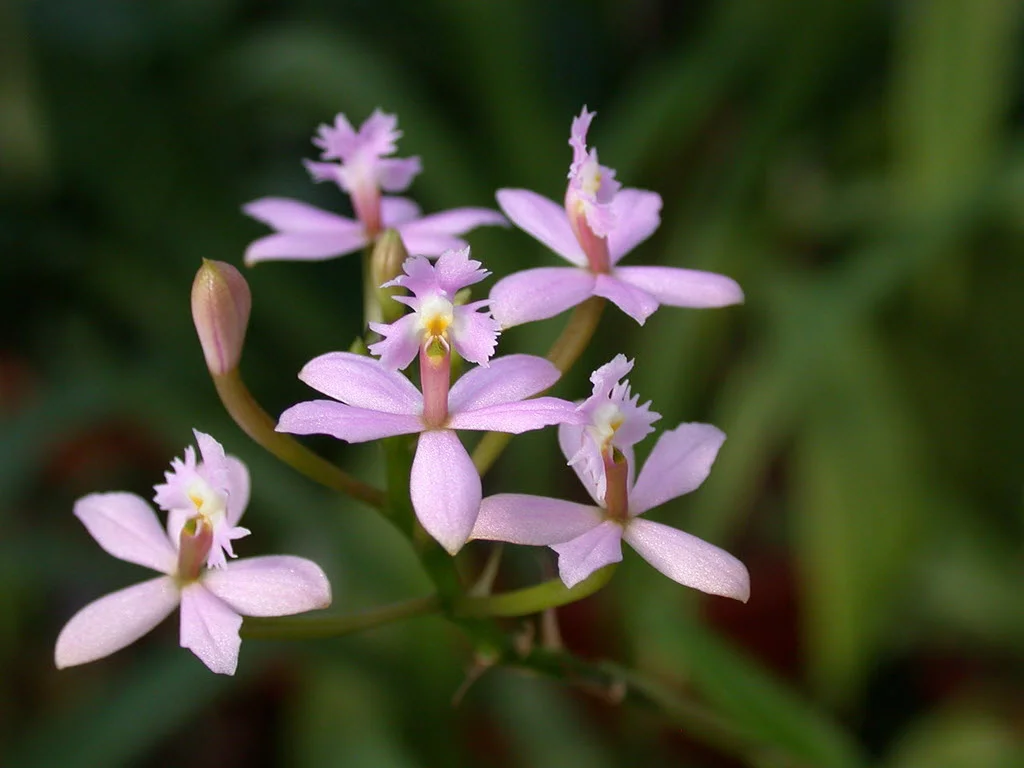Table of Contents
Pronunciation: Vanda (VAN-dah)
Introduction
The Vanda orchid’s natural habitat is in tropical climates, which means that they need a high level of humidity. Its spikes usually showcase 6-8 beautiful flowers that blossom up to 6 inches in diameter in a variety of colors. Some come with beautiful patterns, while some present a solid color.
Vanda Miss Joaquim
This type of orchid typically blooms between spring and fall, though they can also bloom any time of the year.
Temperature
Vanda orchids usually thrive in places with warm temperatures. This orchid requires temperatures of 75°F to 95°F (23.9°C to 35°C) during the day and 60°F to 70°F (15.6°C to 21.1°C) during the night.
During fall, the growth of spikes are assisted by lower nighttime temperatures. Protect Vanda orchids from prolonged temperature drops in order to prevent its growth from stunting and to protect the buds from falling off. Higher temperatures usually encourage faster growth.
Light
Generally, Vanda orchids need bright light intensity. The trick is to provide bright light without causing any sunburn to its petals. In order to determine the amount of light that your Vanda orchid needs, you should know the type of leaves that it has.
Terete-leaf Vandas require full sun while semi-terete leaf Vanda orchids need less. The strap-leaf vanda orchid also requires less light. If you opt to grow your Vanda orchid indoors, it would be ideal to place it in a windowsill facing south.
Water and Humidity
Vanda orchids must be watered every morning with tepid water. This will allow the roots to dry before being watered again the following day.
If you place your Vanda on a wooden slat basket, it would be best to water it daily. If you place it in a pot, then it will not need as much water. Always consider watering more frequently during the hotter months and less frequently during the colder months.
Vanda orchids blossom well in very humid conditions. The ideal humidity level for this type of orchid ranges from 75 to 85%. It can be difficult to maintain a 75-85% humidity level, so we suggest using a humidifier or perhaps a humidity tray near any Vanda orchids you keep.
Feeding
Always remember that Vanda orchids must be fertilized on a regular basis, especially when in active growth. The recommended orchid fertilizer mix is 20-20-20.
During winter, Vanda orchids must only be fertilized monthly. Water your Vanda orchids thoroughly every month to remove excess buildup of fertilizer, and never fertilize completely dry flowers.
Potting
Vanda orchids must be repotted using a coarse medium-grade potting mix. It is recommended that you do this every 2 to 3 years or as soon as the potting medium fails to drain properly. These orchids grow nicely in wooden slat baskets even without any type of potting medium.
Never remove the Vanda orchid from the basket if you need to repot. Soak the roots instead and then place the basket in a new larger basket. This helps the roots to grow without disturbing the bloom.
Video
Here is a really helpful video with our favorite, Miss Orchid Girl. She talks about how to take care of these rather sensitive plants.
If vandas are too high maintenance for you, find easier beginner plants in our comprehensive list of the different types of orchids.











